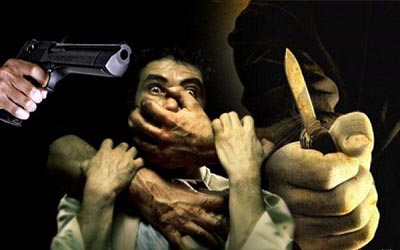Just by searching the word”MEK”you can find unbiased articles and videos from independent journalists who investigated the Mujahedin Khalq Organization (the MKO/ MEK/ PMOI/ the Cult of Rajavi) and revealed its true nature. The most recent one was published by former CIA agent Paul Pillar on the National Interest. [1]
Paul Pillar wrote this one following the publication of a 6,600-word article titled “Terrorists, cultists – or champions of Iranian democracy? The wild wild story of the MEK” in the Guardian by Arron Merat, on November 9th. Merat is a former Iran correspondent of the Economist and as Pillar describes him “an experienced Iran-watcher”. [2]
Among a lot of different details that Merat presents about the MKO, aspects of human rights abuses that is committed by the group leaders are prevalent and undeniable. He begins with the story of a girl imprisoned in the MKO, Somayeh Mohammadi whose parents Mostafa and Mahboubeh have been striving to visit her without the supervision of the MKO authorities, for over 20 years.
However, human rights violation against the MKO members is not restricted to those who are taken as hostages inside the group’s base in Tirana. Defectors of the group are not enjoying the basic human rights of refugees.
Arron Merat states that after the relocation of the group in Albania the group bought up land in Albania and built a new base. “But the move from Iraq to the relative safety of Albania has precipitated a wave of defections,” He writes. “Those with means have fled the country to the EU and the US, but around 120 recent MEK escapees remain in Tirana with no right to work or emigrate. I spoke to about a dozen defectors, half of whom are still in Albania, who said that MEK commanders systematically abused members to silence dissent and prevent defections – using torture, solitary confinement, the confiscation of assets and the segregation of families to maintain control over members. In response to these allegations, an MEK spokesperson said: “The individuals who are described as ‘former members’ were being used as part of a demonisation campaign against the MEK.” [3]
Merat suggests that the MKO’s allegations about defectors are false because “the testimony of these recent defectors follows earlier reports from groups such as Human Rights Watch, which reported former members witnessed “beatings, verbal and psychological abuse, coerced confessions, threats of execution and torture that in two cases led to death”.” [4]
The guardian correspondent lists cases of human rights abuses that have been committed by the MKO leaders naming individuals who personally had the authentic experience of being abused by the leaders. The detailed accounts of numerous aspects of human rights violations inside the MKO included self-confession sessions, physical and mental torture, sexual abuse of female members by Massoud Rajavi, Forced divoce, forced hysterectomy surgeries that made women barren and solitary confinement. Manouchehr Abdi, Batoul Soltani, Zahra Moini and Fereshteh Hedayati are some of former members that Arron Merat quotes their testimonies in his article.
After bringing enough evidence on the abusive system of the cult-like MKO, Merat gets back to Somayeh and her grieving parents. He cites that the Mohammadis‘ lawyer has revealed the fact that the Albanian police are influenced by the misinformation campaign of the MKO. “Politics is interfering in the judicial system,” the lawyer told Merat. “When I went to the police station to register their complaint the police officers actually ran away. They are scared of losing their jobs.” [5]
He then recounts the violent behavior of the MKO agents against Mostafa and Mahboubeh. “The MEK has not taken kindly to the presence of the Mohammadis in Albania,” he states. “They accuse Mostafa – and any former member who has spoken out against the MEK – of being a paid agent of the “mullah regime”. On 27 July, Mostafa was hospitalised following an assault by four senior members of the MEK, which was captured on video by his wife. The attackers, who shouted “Terrorist!” at Mohammadi, were briefly detained by Albanian police. But, after a phalanx of MEK members arrived at the police station, the men were promptly released.” [6]
And about the so-called TV interview with Somayeh in which she accused her father of being an Iranian intelligence agent, Merat writes, “A nervous-looking Somayeh recently gave a video interview inside the MEK base saying that she wishes to remain a member of the group.” [7]
Paul Pillar completes Merat’s article by comparing the cult leaders Massoud and Maryam Rajavi to notorious cult leaders like Jim Jones and Shoko Asahara. “Families have been broken up, married couples told to divorce, and women threatened with punishment if they did not “marry” Massoud and endure his sexual abuse,” Pillar asserts. “Stomach-turning details continue to emerge from the MEK’s current location in Albania, including stories of forced hysterectomies and would-be escapees subjected to solitary confinement. The former head of Albanian military intelligence says that MEK members live in the group’s current compound as “hostages” amid “extraordinary psychological violence and threats of murder.” [8]
As we observer, accounts on suppression and violence inside the MKO camps are not few but conscientious people should take serious action to stop these horrible violence.
Mazda Parsi
References:
[1] Pillar, Paul, The MEK and the Bankrupt U.S. Policy on Iran, the National Interest, November 13th, 2018.
[2] Merat, Arron, Terrorists, cultists – or champions of Iranian democracy? The wild wild story of the MEK, The Guardian, November 9th, 2018.
[3] ibid
[4] ibid
[5] ibid
[6] ibid
[7] ibid
[8] Pillar, Paul, The MEK and the Bankrupt U.S. Policy on Iran, the National Interest, November 13th, 2018.


